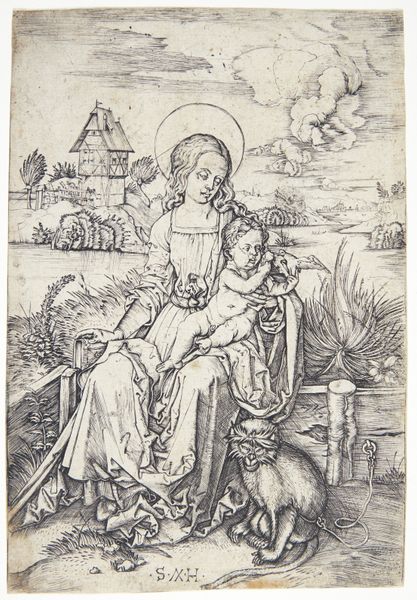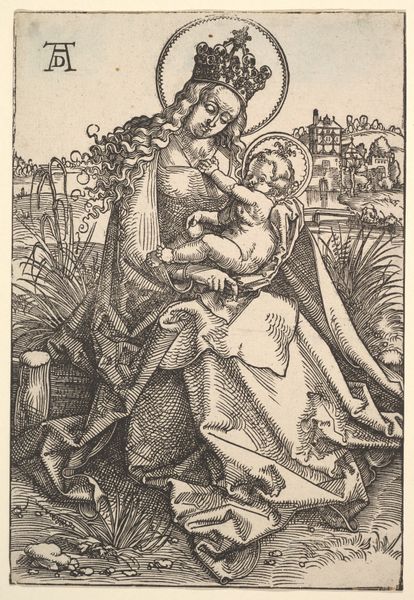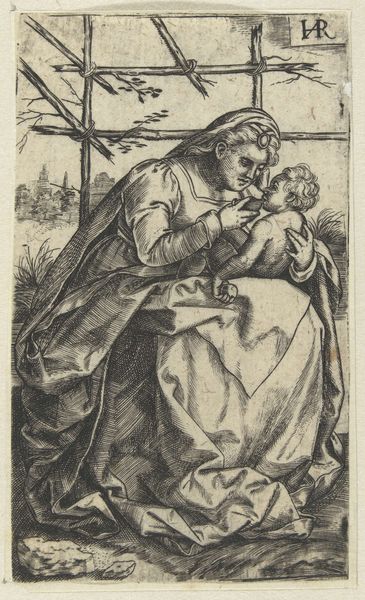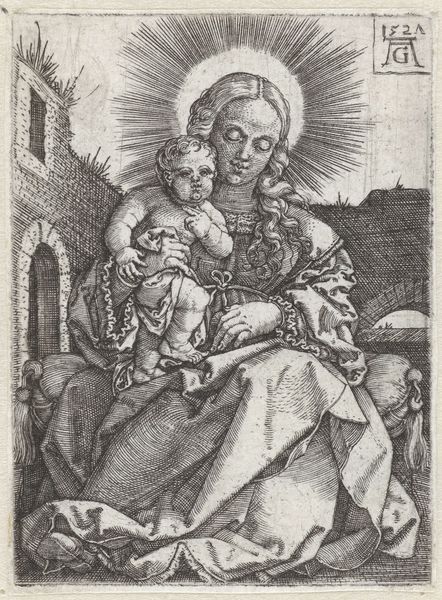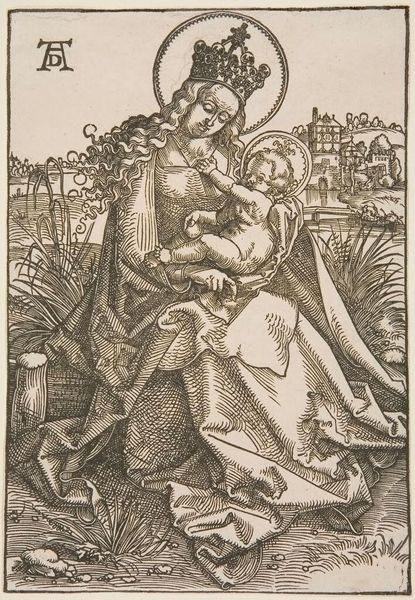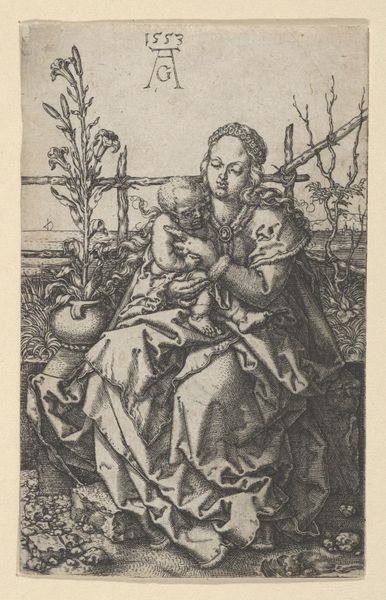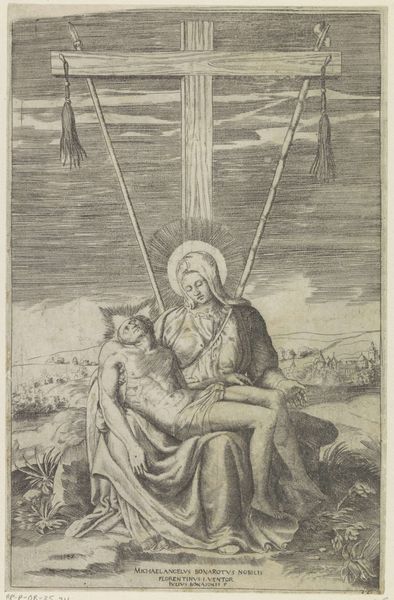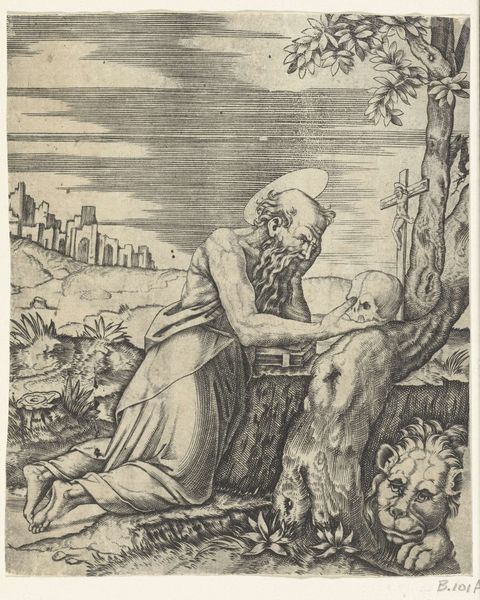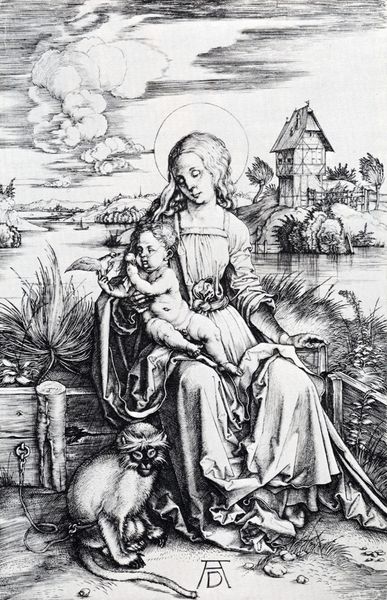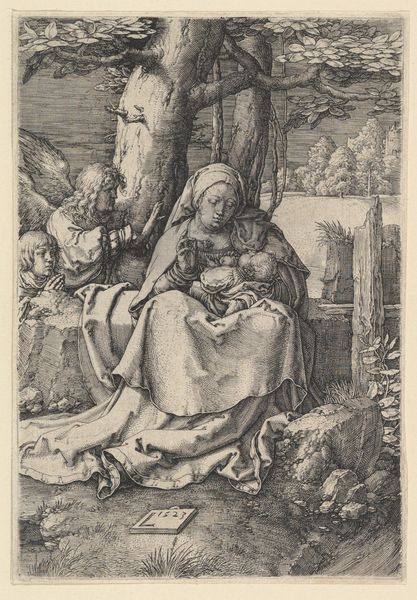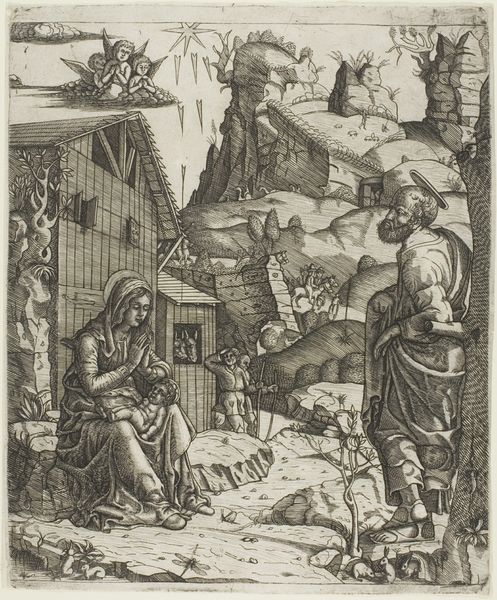
Dimensions: Sheet: 7 1/2 × 4 3/4 in. (19.1 × 12.1 cm)
Copyright: Public Domain
Curator: Here we have Albrecht Dürer's "Virgin and Child with the Monkey," an engraving completed around 1498. It’s part of the collection here at The Met. Editor: Immediately striking. The texture, achieved solely through line work, is captivating. It gives the print such depth. It’s interesting how Dürer contrasts this divine scene with seemingly mundane elements. Curator: Indeed. Let’s delve deeper. Dürer masterfully uses the engraving technique to render light and shadow. Notice how the lines become denser to suggest darker areas, adding volume to the figures and landscape. There’s also this deliberate, constructed gaze between mother and child. The details in the folds of Mary’s gown create a tactile sensation of fabric, while her idealized beauty reflects the influence of Renaissance ideals, rendered via line work. Editor: But let's consider that seemingly odd detail: the monkey. Placed at the bottom left, tethered by a chain, the monkey was frequently a symbol of base human instincts. What statement is Dürer making, placing it in this holy context? Are we to interpret this as a critique of societal morality? Is it a reminder of the ongoing battle between good and evil, and between innocence and corruption? It does present a kind of dialectic. Curator: Your perspective adds an intriguing layer. While the monkey undoubtedly holds symbolic weight, I would suggest also considering its compositional purpose. Its presence anchors the lower left of the artwork, providing balance. In addition, the surrounding landscape is meticulously rendered, drawing our eye through this cultivated Northern European setting. Editor: But it’s also about who gets to have idyll, right? Mary is depicted outdoors, yet she is still confined, a little, not quite free because of social expectation and religion. Also, think about the very real colonial implications of rendering a monkey – this reflects an evolving world view that’s inherently steeped in exploitation. The print reveals, to me, both a sacred beauty and a complex human landscape riddled with conflict. Curator: Perhaps. I appreciate the potential inherent contradictions of subject, place, and technique. Editor: Thank you for sharing the structure, skill, and intrinsic power of Dürer’s composition; its enduring value has deep implications in our contemporary moment.
Comments
No comments
Be the first to comment and join the conversation on the ultimate creative platform.
